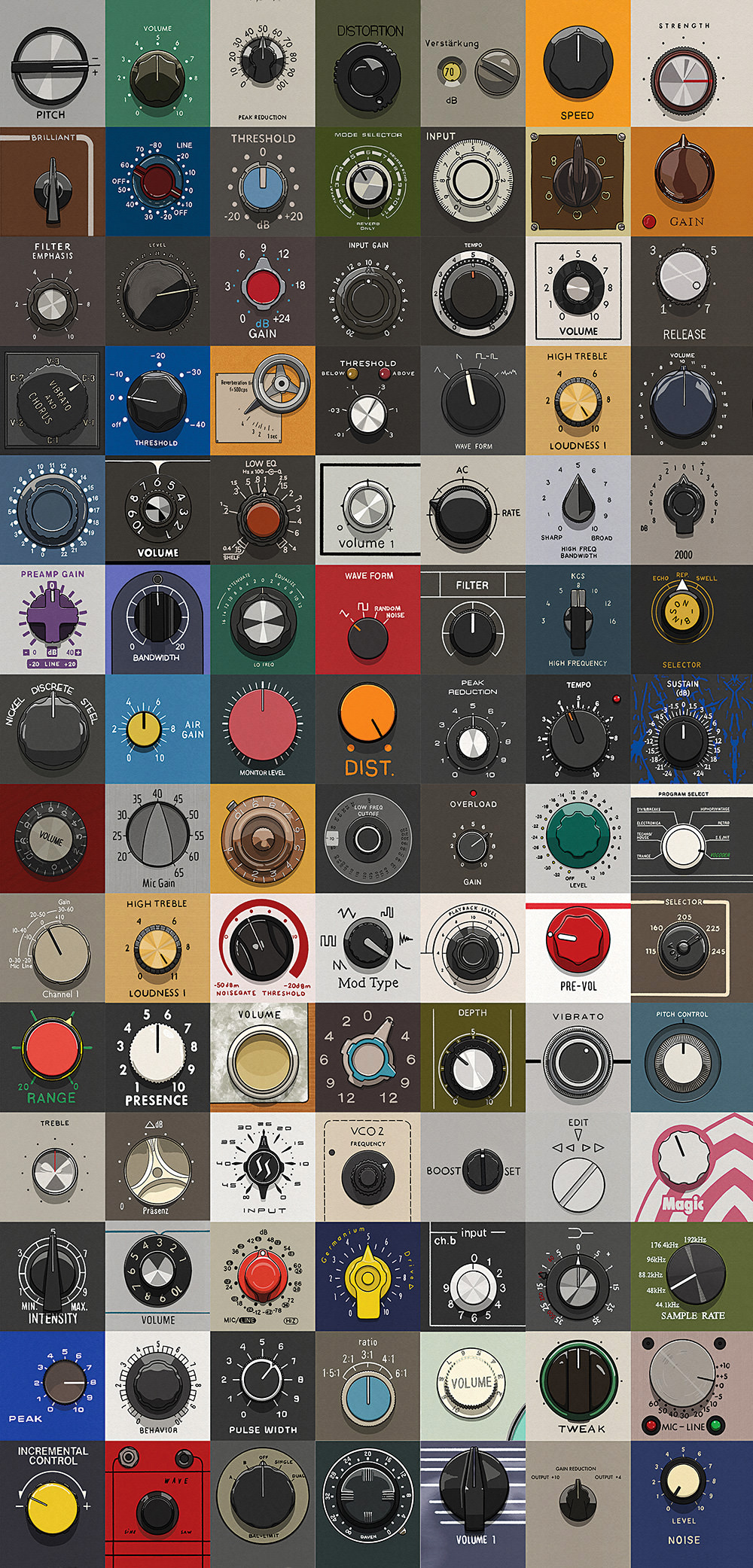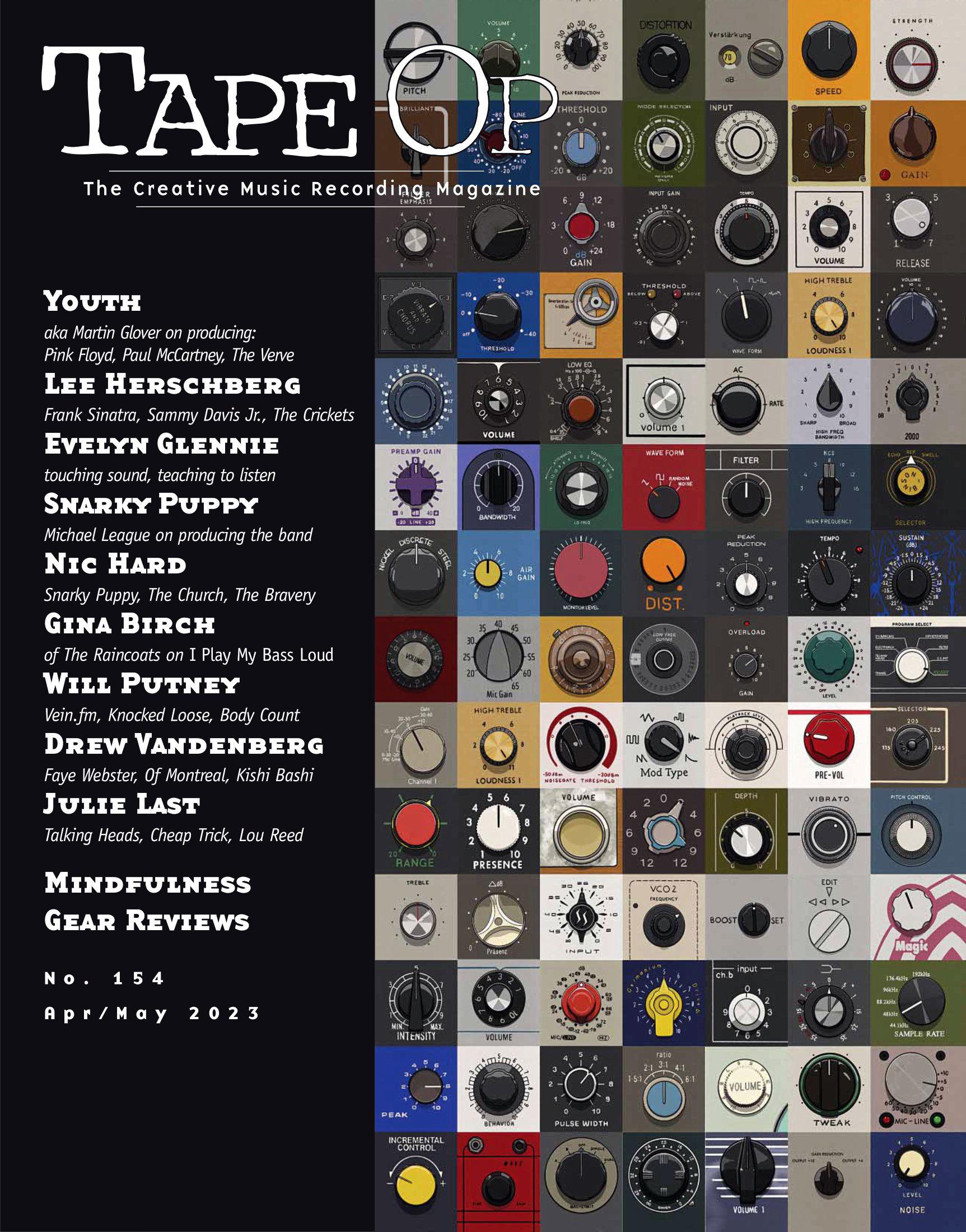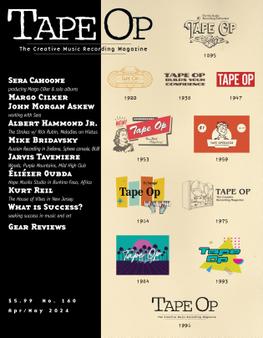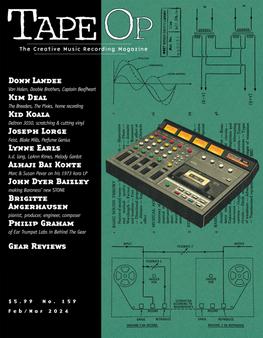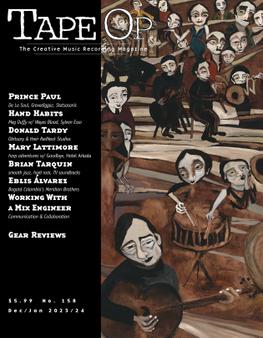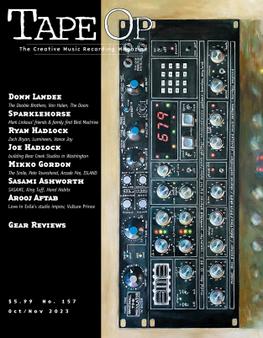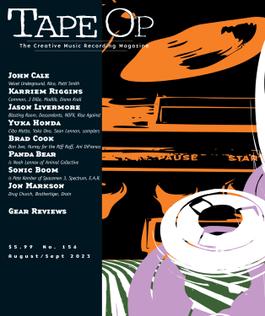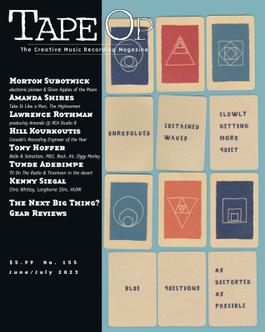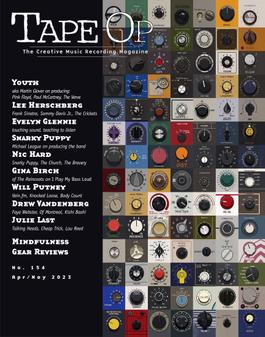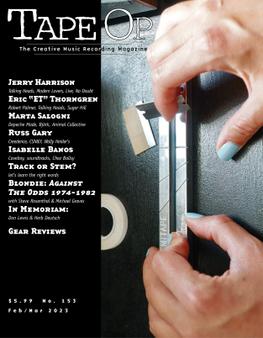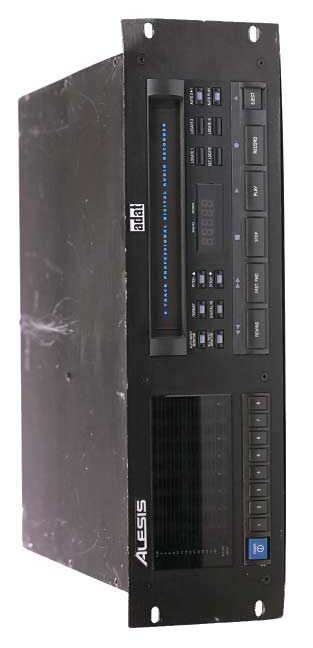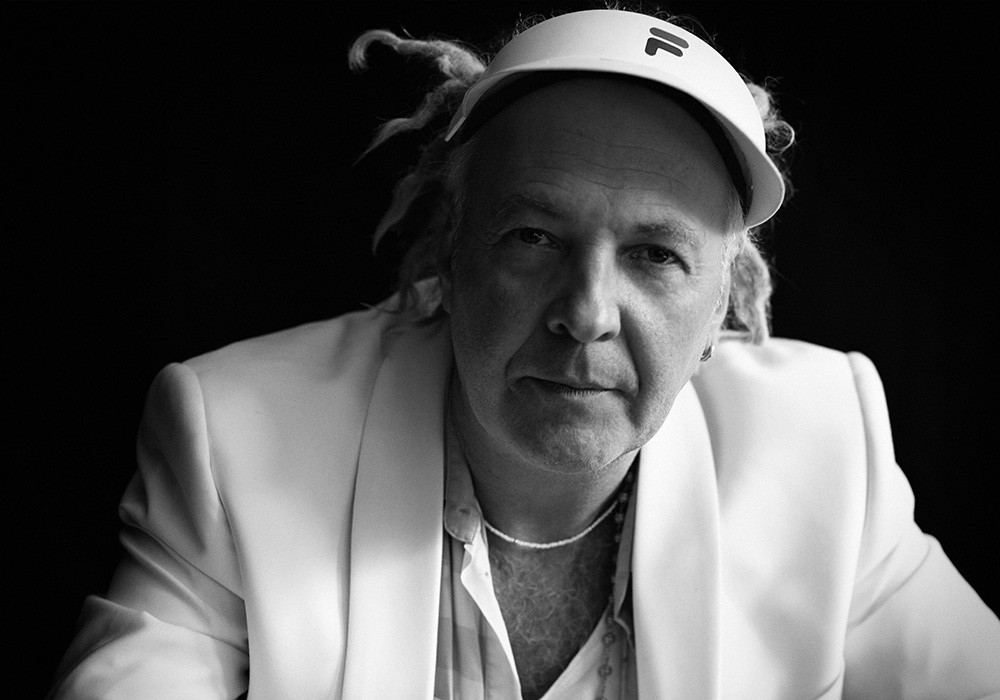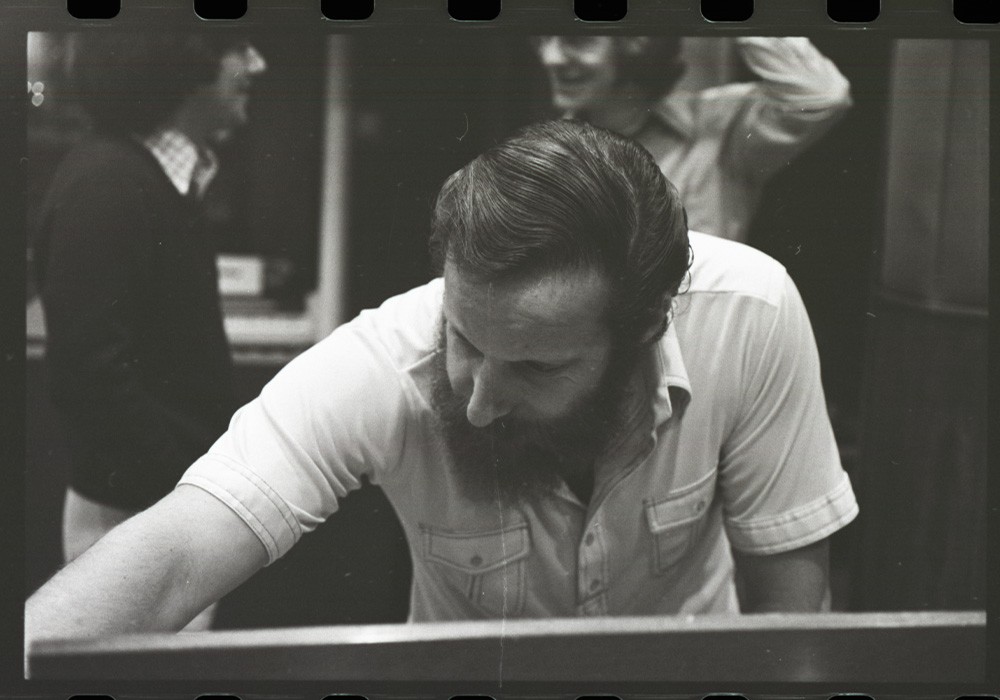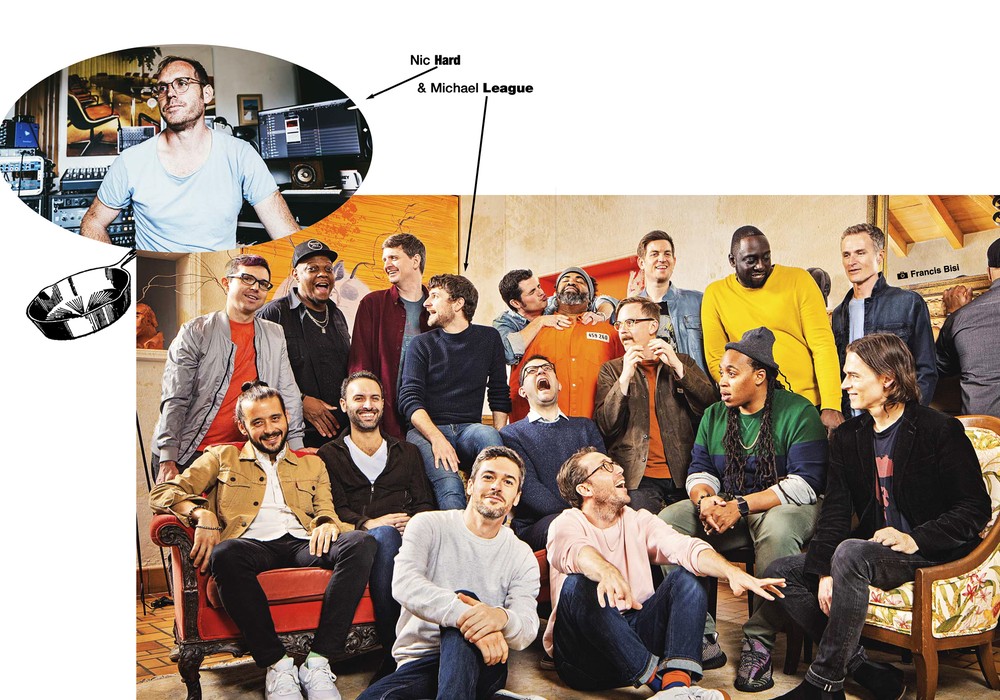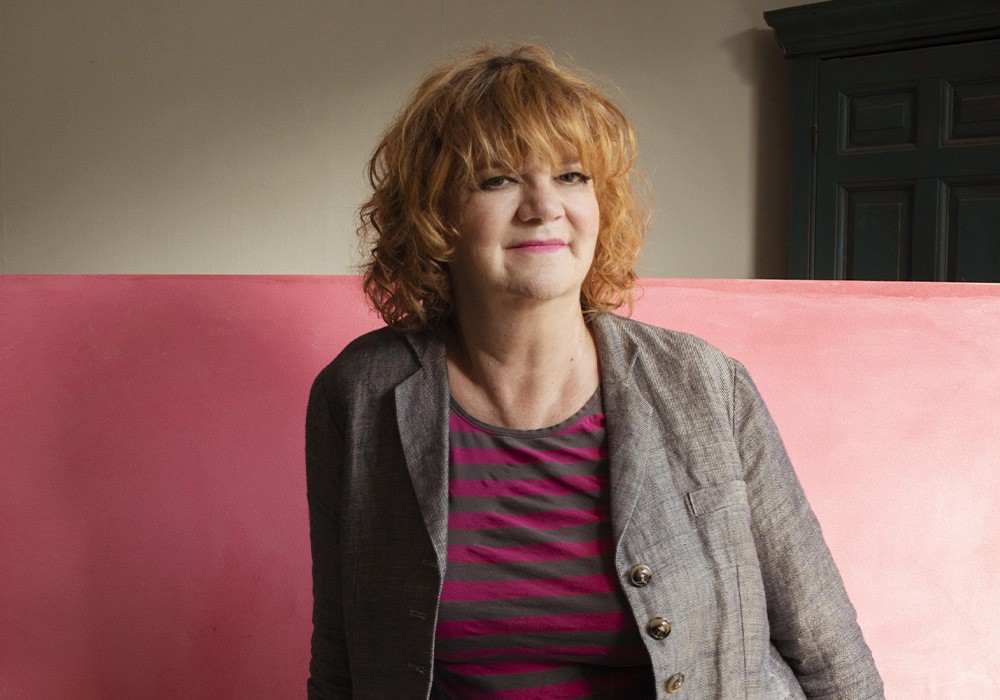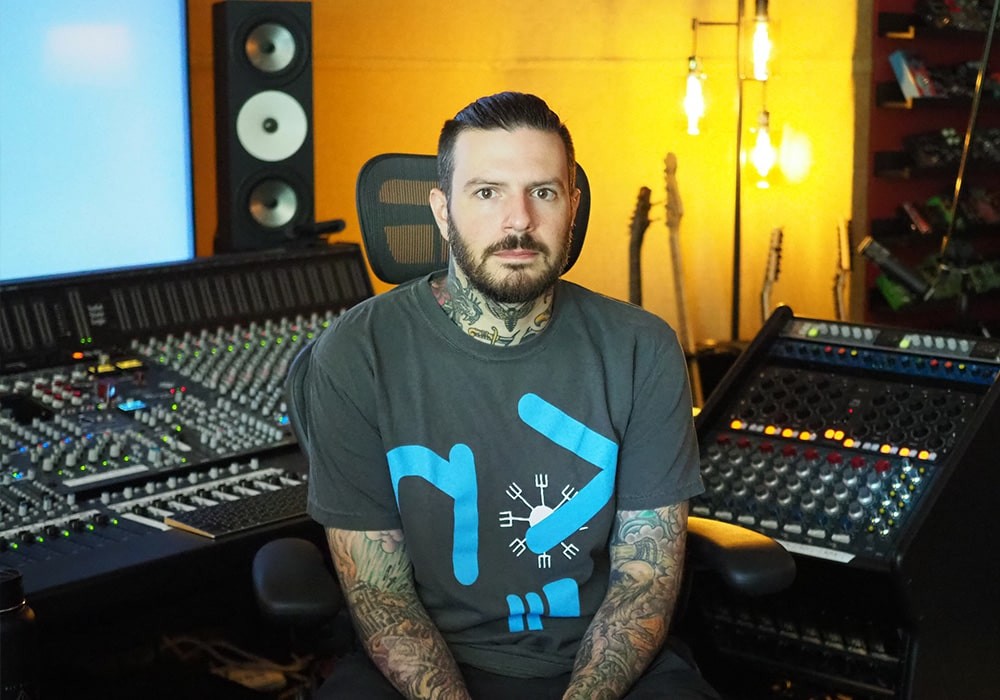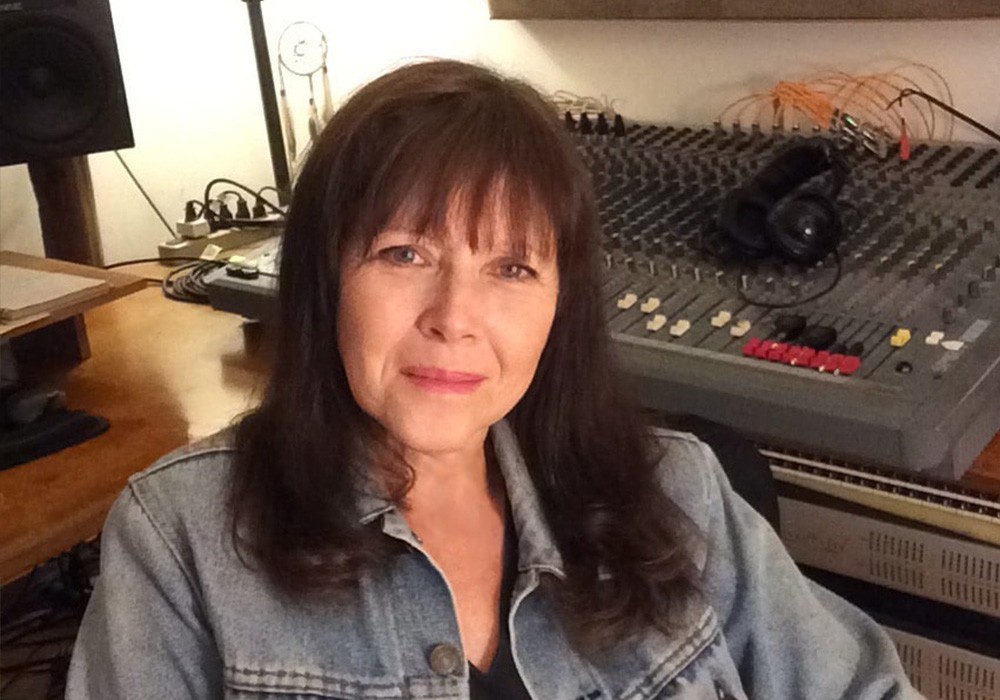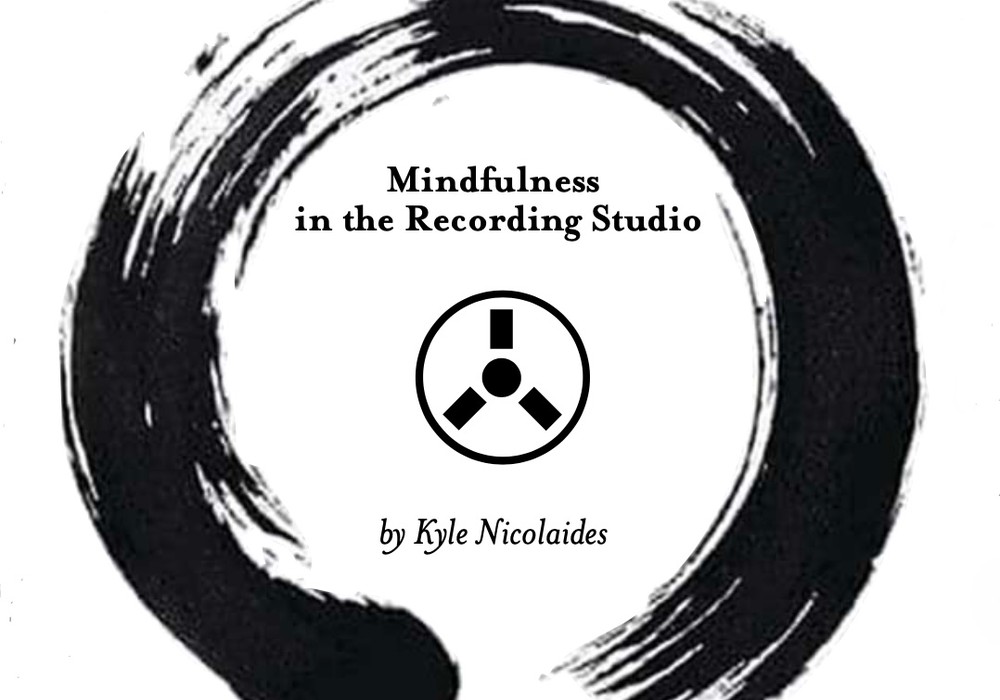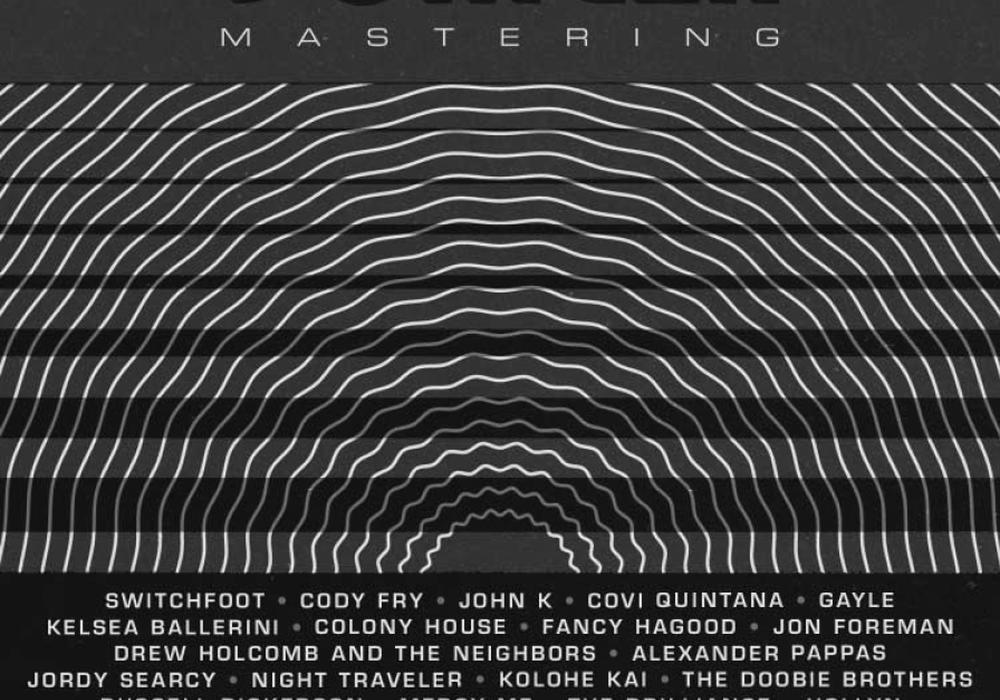Mar/Apr 2023
Welcome to issue #154 of Tape Op.
In 1996, not long before I opened the doors at Jackpot! Recording Studio, I had to decide what format we would track to. I had been using a Tascam 8-track tape deck for the previous couple of years in my Portland basement, but it was becoming quite limiting. Digital recording, via the Alesis ADAT and Tascam D88/38, were common choices for smaller studios back then, but I'd heard horror stories of these machines failing or not synchronizing. Additionally, and equally concerning, I'd also heard some less-than-stellar albums done on them. (Looking back, I don't think it was all the ADAT's fault!) I knew that linear tape capture of digital information would soon be superseded by hard disk recording; I'd even briefly used John Baccigaluppi's Digidesign Sound Tools four years earlier, with its $2000 600 MB drive. Pro Tools (renamed from Sound Tools) was available in 1996, but still very expensive, and I knew the technology (16-bit?!) would be changing rapidly. I could envision easy editing and high track counts down the road, but not yet for me.
So, I looked backwards. In the history of recording, 16-track had naturally followed 8-track. I went looking for a 16-track, 2-inch tape machine, and found an old MCI JH-16 deck. It was a nightmare to keep this deck running, but it sounded great and many cherished albums were made on it. At the time, I recall (foolishly) telling people I would never have a computer in my control room. But come 2002, John Goodmanson [Tape Op #35] loaded in his Pro Tools 888 rig so we could digitally track Sleater-Kinney's One Beat, and I quickly realized I had to jump in and learn fast. Not much later, I found myself with a Digi001 (and 002) running Pro Tools LE. It had been over ten years since I'd first seen and utilized Sound Tools.
Adopting new technology in the studio always presents an interesting conundrum. One might not want to be the first; but if your clients demand it, you might have to reconcile with the reality of having to pony up for cutting-edge gear. Do I want to outfit Jackpot! with an extensive array of monitors and a new monitor controller so I can offer Dolby Atmos? Financially? No, not at all. If Atmos becomes something our clients start to ask for (and are willing to pay more for)? Well, then I will have to start thinking about it. Will Atmos and its ilk stick around to be the main format for music consumption? I just don't know. Maybe I'll blurt out something stupid I regret, like last time, or maybe I'll hold my tongue and carefully watch what happens.
Enjoy Scott Anthony's thoughts on this very subject in this month's End Rant.
